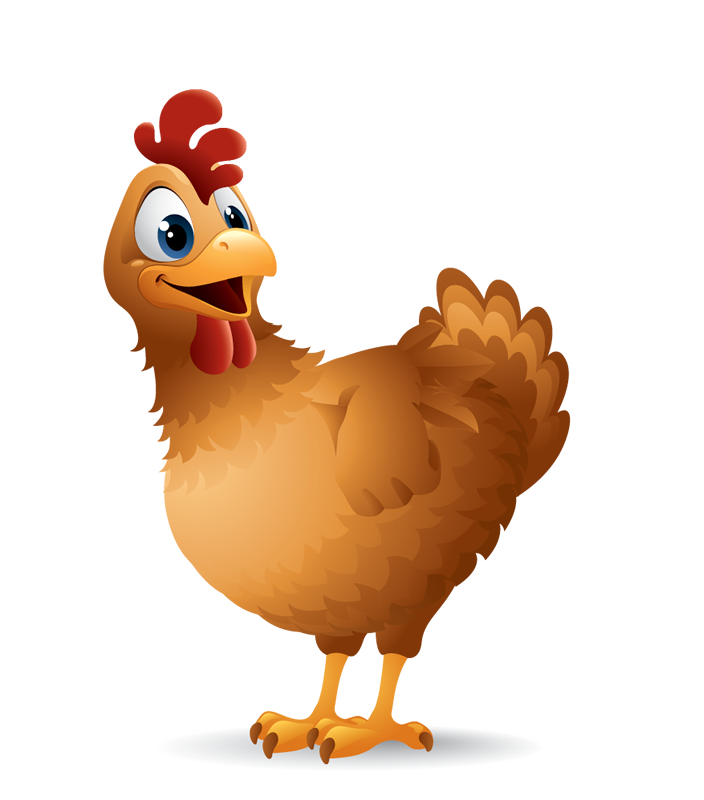The rescue chook option
The Sweeney’s own journey began with fronting up to one of the local egg producers and asking for spent layers – chickens who have spent the last year laying.
“They look pretty sad when you get them because they haven’t been able to express their innate ‘chookness’, because they’re been stuck in a cage with other chooks. Their beaks are trimmed of course which creates problems with them foraging. They’ve had a pretty rough life for 12 months,” says Nevin.
From an ethical point of view keeping such chickens is a good thing, Nevin said, but if you’re looking at producing eggs it’s probably not.
“It really depends on why you’re doing it. If it’s to show the kids what the chooks are like then it’s a good thing. The alternative is to get day old chicks and brood them so the kids get to see the whole thing,” he said.
Chook tractor
At Clovelly the ‘Taj Mahal’ chicken coop is made from hardwood with an enclosed section with nesting boxes and perches for sleeping. The chickens are let out twice a day for a forage and a run.
Another option for housing is creating a chook tractor that can be wheeled around to various sections of the grounds. The chickens at Nevin and Linda’s place visit each of their 14 veggie patches twice a year, fertilising the soil.
“They can see out of the wire, they’ve got ventilation and because they’re moving you don’t get a build up of pests and diseases on the soil they’re in. A permanent structure is a good idea but it comes down to what sort of run you want,” Nevin said. Chickens not only bring joy but great utility.
“Clovelly has a kitchen garden program where chickens and the eggs play an integral part. The chickens are fed scraps along with the worms and rabbits, so they help us minimise our waste. As well as their environmental benefit they support the Early Years Learning Framework, particularly Outcome 2 – Children are connected with and contribute to their world. On a practical programming level this means that the children take part in feeding the chickens, watering them and collecting the eggs,” Margaret said.
Fresh eggs are a big drawcard. Families and staff who want fresh eggs put their names on a list and collect their half dozen eggs when they’re ready.
“The children help collect eggs and also see the daily feeding and upkeep. We have a lovely bunch of families and a small group form our chicken roster. They take it in turns to feed and water the chickens, and rabbits and water the garden on weekends and during holidays.”
Chicken challenges
Challenges in chicken world can be varied as anybody who has encountered chook-led garden decimation would know.
Thankfully chickens are easier to catch than rabbits, Margaret said, and the Centre has fenced off the vegetable yard. When the run gets dirty or boggy chickens become susceptible to disease so it’s a constant chore keeping it in good condition.
“We’ve had a steep learning curve regarding chicken husbandry, but our biggest challenge so far has been ensuring a child who has an anaphylactic reaction to chickens is kept safe.”
The service recommends keeping chickens to other services. Co-Director Kerry Terrance says the chickens are always a focus for children who seem instinctively drawn to other living creatures.
“The pros are all about connecting with nature and connecting with food in an authentic way. Egg collecting and chicken wrangling are all part of the program particularly in the two to three-year-old room.”
Did you know?
Chickens under 12 months are called pullets.Councils requirements vary in the number of birds that can be kept and in the type of housing required. Ring your local council to check the regulations. Many councils don’t allow roosters.Chickens moult annually and replace feathers.Keeping food in a suspended chook feeder can deter mice or rats. Nevin recommends keeping food in a steel container or garbage bin as rats will chew through plastic containers.Predators include foxes, dogs and birds of prey.Chickens control lice with a daily dustbath in dry dirt so try to keep this patch dry. 



































































































































